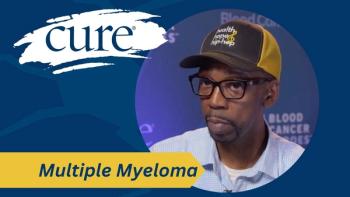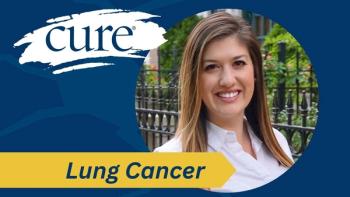
National Organization Recommends Women Delay Mammogram Screening Following COVID-19 Vaccine
The Society of Breast Imaging has recommended women wait four to six weeks after receiving their second dose of a COVID-19 vaccine to get a screening mammogram. However, experts differ on whether women should wait to get a screening mammogram following their vaccine.
The Society of Breast Imaging has recommended that women undergo a mammogram screening either before receiving a COVID-19 vaccine or wait to get their breasts imaged anywhere from four to six weeks after receiving the second dose of the vaccine.
One of the side effects of the vaccines includes enlarged lymph nodes in recipients, which could raise a red flag during a mammogram screening.
“The (Society of Breast Imaging) guidelines include a statement to consider scheduling screening mammograms around COVID-19 vaccinations because, following vaccine administration, temporary enlargement of lymph nodes can be seen,” Dr. Clayton Taylor, a breast radiologist at The Ohio State University Comprehensive Cancer Center – Arthur G. James Cancer Hospital, said in an interview with CURE®. “This enlargement of lymph nodes, a sign the body is responding appropriately to the vaccine, can occasionally be seen in the axilla or armpit area on a screening mammogram. If seen on a mammogram, these enlarged lymph nodes may cause additional unnecessary imaging, such as a focused ultrasound evaluation of the area.”
The national organization referenced certain side effect data that demonstrated that patients who received either COVID-19 vaccine developed by Moderna or Pfizer-BioNTech were more likely to experience swollen lymph nodes, which lasted a median of one to two days in the Moderna arm and a median of 10 days in the Pfizer-BioNTech arm.
The concern, according to Dr. Debu Tripathy, is that the information from those trials involves adenopathy (swelling of the lymph nodes) reported by patients that did not involve radiographic imaging.
“At the radiographic level, the number of cases where a radiologist may call is an abnormal node could be higher than what the vaccine clinical trials showed, and could persist longer,” Tripathy, who is chair of Breast Medical Oncology at The University of Texas MD Anderson Cancer Center in Houston and editor in chief of CURE®, said in an interview with CURE®. “So, while I think the Society of Breast Imaging guidelines are reasonable, if individuals have both screening mammograms and COVID vaccines scheduled, it's better to get the vaccine soon after their mammogram. Or, if you've already had the vaccine and it's time for your mammogram, and you don't want to delay it too much, I would follow the Society of Breast Imaging guidelines. And if you want to give yourself a good measure of not having to get a false-positive (result), I'd say wait even a little longer.”
No Right Answer
Although there is no right answer for how many false-positive results may occur from getting a mammogram after receiving a COVID-19 vaccination, Taylor says that the risk is likely small.
“Anecdotally, in our experience over the last two months, the risk appears to be very low as long as we know the patient’s information regarding COVID-19 vaccination administration,” he said. “If a woman and her provider feel very concerned about the possibility of additional false positives, we are suggesting they schedule their screening four to six weeks after vaccination is completed.”
However, Taylor (who was not a part of the recommendations) said the most important thing for women to do is receive their COVID-19 vaccines and get screened.
“I appreciate the (Society of Breast Imaging)’s communication and guidance given that the COVID-19 vaccines are new and will be widely administered,” he explained. “However, I think that screening mammograms can be safely and accurately interpreted in patients who have recently received COVID-19 vaccines as long as that vaccination information is gathered, as recommended by the (Society of Breast Imaging).”
The concern with that, however, according to Tripathy, is any risk of a false-positive is still a risk for unnecessary follow-up.
“I think, as good as mammographers are, they can't always distinguish between benign (not harmful) and malignant (cancerous) adenopathy,” Tripathy said. “There are some features that may point to one versus the other. While it is true that an expert and experienced mammographer is going to be better at sorting that out, but it's not going to go to zero versus 100%. So, I think it still makes sense (to wait). Because, I'll tell you, even an expert mammographer that sees a big node, they're still going to want to follow up. A screening mammogram can definitely be delayed, I think it's better to not have a false-positive, if you're only delaying it by a month.”
Women with Symptoms Should Be Screened Regardless of Timing
Part of the recommendations suggested providers ask patients their COVID-19 vaccination status, including the timing of when they received it, and in which arm the vaccine was delivered. Moreover, to reduce patient anxiety, the recommendation suggested providers inform patients that vaccines can cause temporary swelling of the lymph nodes.
It is also recommended that women who recently received a vaccine and had a positive result during initial screening be followed up with four to 12 weeks following the completion of their second dose.
Tripathy and Taylor, however, both noted that women who are showing symptoms related to breast cancer should immediately be screened and not wait regardless of the recommendation.
“Women who are symptomatic and need breast imaging, such as (of) a breast lump, should most definitely not delay seeking breast imaging or care because of COVID-19 vaccinations,” Taylor said.
“If you are at higher risk (for example following up on an earlier equivocal mammogram) or coming in for a breast symptom such as a lump, dimpling or change in the nipple, then you need a diagnostic mammogram, which is different from a screening mammogram and you should have the necessary evaluation and imaging studies without delay,” Tripathy said.
For more news on cancer updates, research and education, don’t forget to




